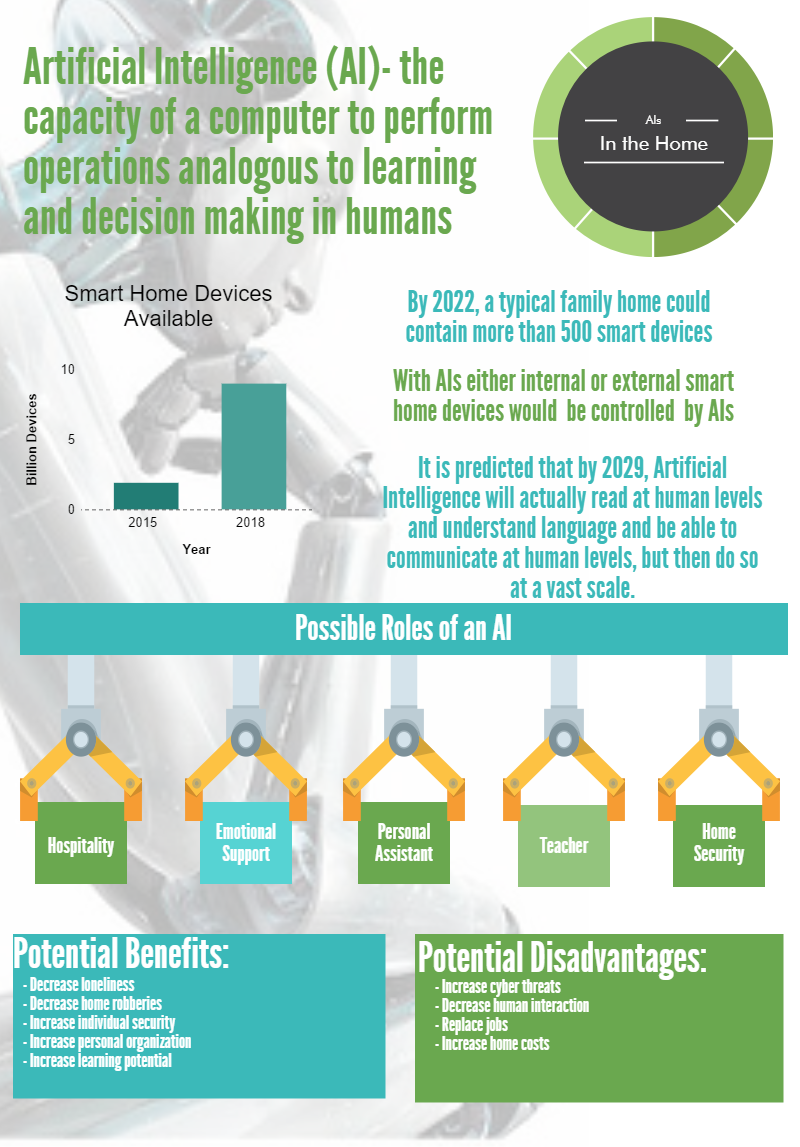Artificial intelligence (AI) is a growing technology that is used to assist humans in various processes. It has multiple benefits. These include reducing human error and improving decision-making. In addition, AI has also been used to protect against cyberattacks. It is gaining popularity in almost every industry, and researchers are constantly searching for new applications.
Reduces human error
Artificial intelligence (AI) can be used in a variety of workplace settings to reduce human error and boost productivity. Its algorithms and data-based decision-making allow it to achieve higher accuracy and precision than humans. Unlike human workers, machines do not get bored and have the benefit of a constantly refreshed mind. This benefits both businesses and employees, as it makes work easier and saves time.
As an example, a robot using artificial intelligence (AI) is trained to read and analyze data. Rather than relying on the expertise of an employee, AI is programmed to read large amounts of data and can correct mistakes in reports. Ultimately, AI improves customer service by decreasing errors.
An AI-based system may also help manufacturers minimize their costs by ensuring consistency in labeling. This can reduce the cost of label replacements. Furthermore, it can act as a training tool for new operators. It teaches them the proper positioning of brand elements on bottles. It also helps them differentiate between “good” and “bad” products.
AI can also be used to reduce data entry errors. By using machine-learning methods, bots with AI capabilities can analyze data and categorize it accordingly. For example, they can differentiate monthly phone bills from prepaid phone bills. They can also identify data patterns and trends in historical data, reducing the risk of human error.
Minimizes costs
One of the biggest challenges in implementing artificial intelligence is gathering and organizing large amounts of unstructured data. Not only do AI experts have to create an infrastructure that allows the data to flow continuously but they also have to deal with privacy and security concerns. For these reasons, training AI-powered medical imaging solutions can be difficult. In such cases, engineers may artificially expand a small dataset or re-use existing classification algorithms.
While deciding which approach to use is most cost-effective, companies must take care to account for the data gravity. Data processing is an expensive process. In addition, it is essential to consider the location of the data. A localized data environment can save a considerable amount of money. It’s also important to negotiate ingress costs with the data provider.
The costs of data and analytics are spiraling out of control. Data has been dubbed ‘the new oil’, and organizations must spend time analyzing their data sources to build AI solutions. Aside from gathering data, businesses must also monitor metrics, automate reports and visualize the data.
Companies can also reduce costs by building AI models using low-cost APIs and using pre-trained neural networks. For instance, many companies already have infrastructure in place from Microsoft. They can extend these applications with the AI features offered by Azure. Another option is to use a Google office and extend them with the AI features. The only drawback is that such services are still considered a nonstarter by many enterprises.
Improves decision-making
Companies are increasingly using AI to improve decision-making processes. It takes over routine administrative tasks, enabling employees to make better choices. AI also helps organizations predict future trends and customize their customer service and product offerings. Moreover, it can help businesses optimize risk management and manufacturing processes. In addition, AI can improve postponement and customization processes, while reducing the occurrence of production problems.
For example, AI can rank the people involved in a major decision and report the probability of the decision’s success. If the probability of success is low, the decision can be suspended. But human decision-making is still essential, including empathy and communication skills. Without them, AI can’t effectively evaluate the “soft” factors that make a decision. It is therefore important for organizations to include human empathy, human communications, and corporate social responsibility into the organizational culture.
While many people may think that AI is merely a tool to augment human decision-making, this is far from true. AI is increasingly used to provide more accurate forecasts, quantify uncertainty, and anticipate user data needs. Some AI applications can even recommend courses of action. In addition, these technologies can also make complex and uncertain situations easier to predict. This way, organizations can make better decisions faster. But, it’s important to note that AI is still a work in progress.
For instance, AI recommendation systems can make it easier to find similar products in the market. With this technology, organizations can increase conversion rates and reduce bounce rates by tailoring content to the preferences of their consumers. Additionally, AI recommendations can help companies craft more personalized and effective customer interactions.
Minimizes bribery
The use of Artificial Intelligence as an Anti-Corruption Tool has great potential. This technology can help reduce bribery and improve public services. It can identify and prevent bribery before it occurs. The impact of corruption is especially pronounced on the poor. This group often pays the highest percentage of their incomes in bribes. Furthermore, corruption worsens inequality and social division.
Minimizes compliance issues
Artificial intelligence (AI) solutions can minimize compliance issues, but they also present a range of new risks. For example, AI may amplify historical bias against minorities, or lead to opaque decisions in healthcare. These risks are compounded by the inherent complexity of AI systems, which often have hundreds of millions of parameters. To prevent such problems, executives must carefully weigh the benefits of AI with the risks.
AI solutions can help companies manage compliance risks by alerting authorities of non-compliance and logging evidence. This approach can also serve as a deterrent to fraudulent actors. But before companies can take advantage of AI solutions, they must be willing to adapt to changes in their current processes. This technology should not replace the efforts of compliance teams.
Financial regulators are actively seeking to harness AI to minimize compliance risks. While it took several years for digital analytics to become the norm, AI is now widely used across industries. As a result, the need for regulatory technology will only increase in the future. And the benefits of AI-based compliance programs will continue to rise.
Minimizes litigation
Artificial intelligence (AI) is an emerging technology that can help minimize the costs of litigation. Companies interested in AI solutions should assess their legal risks before purchasing an AI solution. These companies should anticipate legal liability in the event that their AI system fails, and should consider their own compliance and investigative needs. Ideally, companies should also establish an effective governance structure for AI systems.
AI has great potential to help lawyers reduce litigation costs, develop stronger business strategies, reduce contract risks, and improve the delivery of legal services. In fact, many legal departments already see AI as a valuable tool. According to Deloitte Insight, AI has already eliminated 31,000 jobs in the legal industry, and created 80,000 more, which are higher skilled and paid. In other words, AI cuts out low-skilled human resources and improves job satisfaction for highly skilled legal personnel.
AI technology will also streamline lawsuits and trials. While AI may speed up court decisions and litigation, it has a number of potential disadvantages. Among them, it may lead to bias and discrimination in decisions and could result in new case law and precedents. In addition, AI will not provide neutral, objective advice.
Law firms using AI technologies should prepare for this new technology and be prepared to adapt to the challenges it presents to their clients. Using AI experts to evaluate the risks and benefits of AI technologies will be essential for legal firms.

